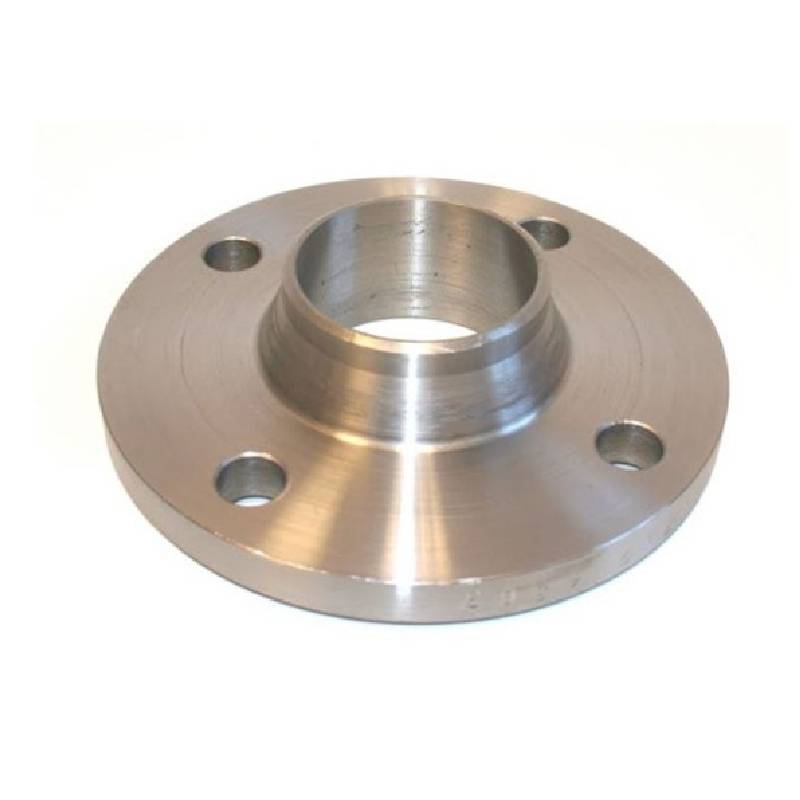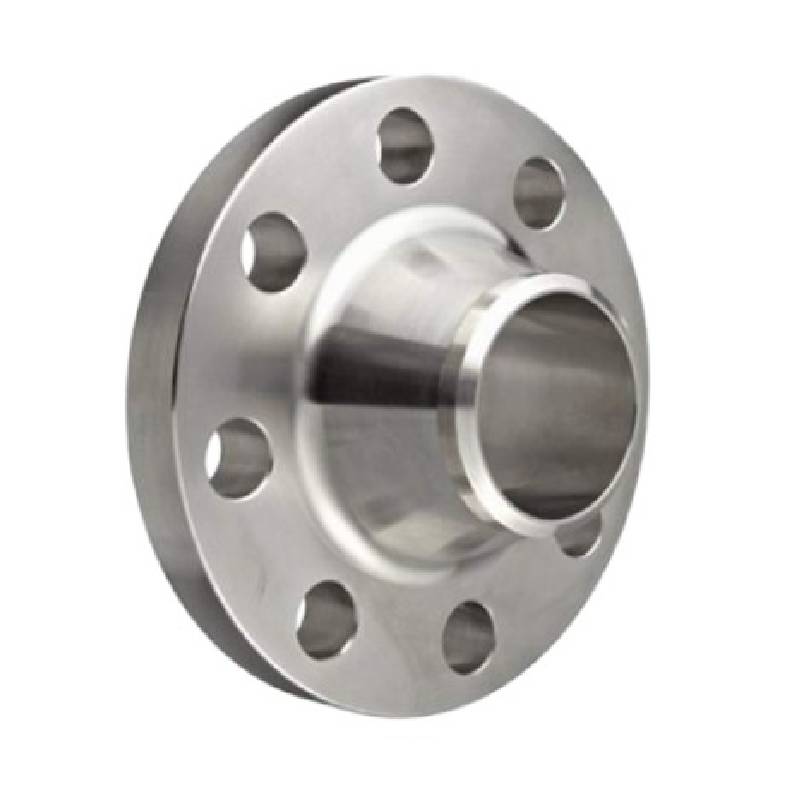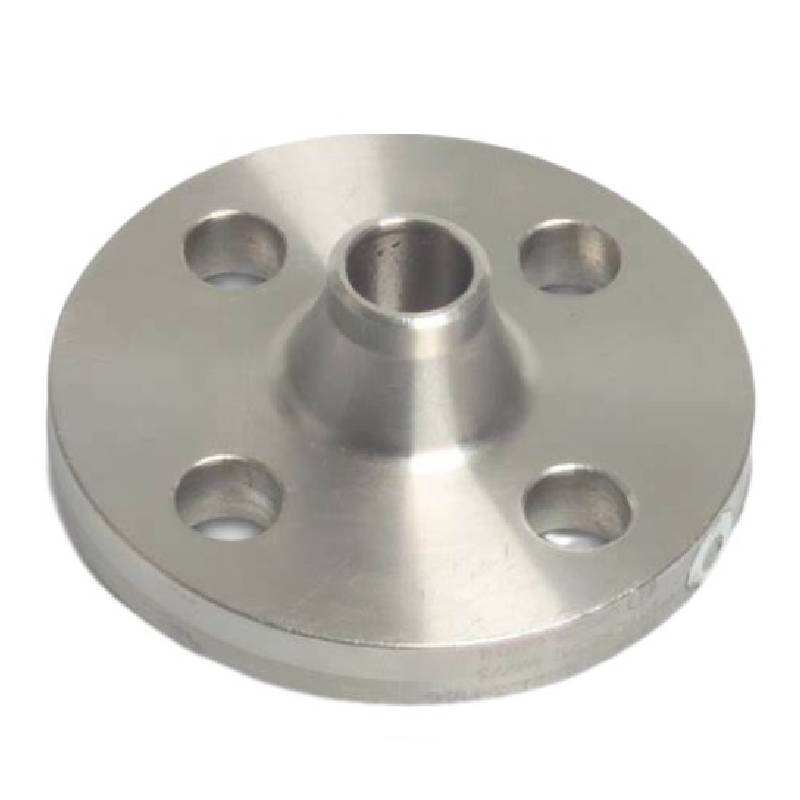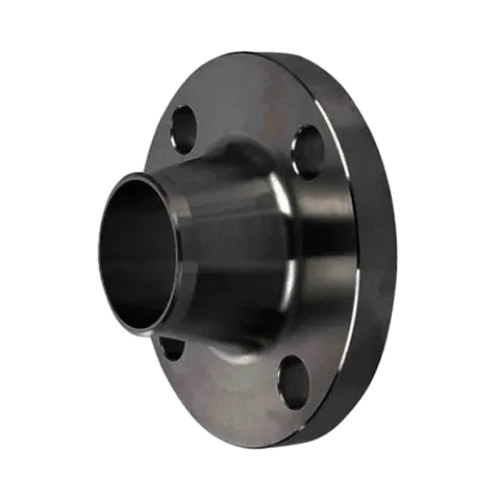-
Cangzhou Yulong Steel Co., Ltd.
-
Phone:
+86 13303177267 -
Email:
admin@ylsteelfittings.com

Aug . 28, 2025 00:40 Back to list
DIN 86037 Flange: Reliable PN10/PN16 Pipe & Slip On Flanges
Understanding the DIN 86037 Flange: A Cornerstone in Industrial Piping Systems
In the intricate world of industrial fluid transfer and process systems, the integrity and reliability of every component are paramount. Among these, flanges play a critical role in establishing secure and leak-proof connections. This comprehensive guide delves into the specifics of the DIN 86037 flange, a highly regarded standard within European industrial engineering. We will explore its technical nuances, manufacturing processes, diverse application scenarios, and the compelling advantages it offers, especially when contrasted with related standards like the DIN 86044 flange or various pressure classes such as DIN flange PN10 and DIN flange PN16. The focus will be on providing B2B decision-makers and engineers with deep insights into this essential component, from material selection to real-world performance.
The demand for robust and dependable DIN pipe flanges continues to grow across critical sectors, driving innovation in manufacturing techniques and material science. This article aims to equip professionals with the knowledge needed to make informed decisions regarding the specification and procurement of high-performance flange solutions, ensuring operational efficiency and long-term system stability.
The Manufacturing Process of DIN 86037 Flanges: Precision and Durability
The production of a DIN 86037 flange is a sophisticated process demanding meticulous attention to detail at every stage to ensure compliance with stringent DIN standards and to guarantee exceptional performance under diverse operational conditions. This multi-step manufacturing journey transforms raw materials into highly engineered components capable of withstanding extreme pressures and temperatures.
1. Material Selection
The foundation of a high-quality industrial flange lies in the selection of appropriate materials. Common materials include carbon steel (e.g., C22.8, P250GH), stainless steel (e.g., 304, 316L for enhanced corrosion resistance), and alloy steels. The choice is primarily dictated by the intended application's operating temperature, pressure, and the corrosive nature of the fluid medium. Material specifications strictly adhere to international standards such as EN 10222-2 or ASTM A105 for forged carbon steel, and ASTM A182 for forged stainless steel, ensuring metallurgical integrity and mechanical properties.
2. Forming Process: Forging or Casting

Most high-performance flanges, especially those destined for critical applications, are manufactured through forging. Forging: This process involves heating the raw material to a plastic state and shaping it using compressive forces, often with hammers or presses. Forging refines the grain structure, eliminates internal voids, and enhances the mechanical strength and toughness of the flange, making it superior in terms of impact resistance and fatigue life compared to cast alternatives. Casting: While less common for high-pressure or high-temperature applications, casting involves pouring molten metal into a mold. This method can be more cost-effective for larger or more complex geometries but typically results in lower mechanical properties and a higher risk of internal defects.
3. Machining and Finishing
Following the forming process, the rough flange undergoes precision machining. Modern CNC machining (Computer Numerical Control) is utilized to achieve the precise dimensions, bore diameters, bolt hole patterns, and critical facing finishes required by the DIN 86037 standard. This stage ensures concentricity, flatness, and surface finish crucial for a proper seal. The facing type (e.g., Raised Face (RF), Flat Face (FF), Ring Type Joint (RTJ)) is also precisely machined according to specific application requirements.
4. Heat Treatment
Heat treatment processes such as normalizing, annealing, quenching, and tempering are applied to optimize the mechanical properties of the flange. This step is crucial for relieving internal stresses, improving ductility, increasing strength, and ensuring the material meets the specified hardness requirements. The exact heat treatment regime depends on the material grade and the desired final properties.
5. Testing and Quality Control
Rigorous testing is integral to ensuring the quality and safety of every flange. This includes:
- Chemical Analysis: Verification of material composition.
- Mechanical Testing: Tensile strength, yield strength, elongation, impact toughness (Charpy V-notch), and hardness tests.
- Non-Destructive Testing (NDT): Ultrasonic testing (UT), magnetic particle inspection (MPI), liquid penetrant inspection (LPI), and radiographic testing (RT) to detect internal and surface defects.
- Dimensional Inspection: Verification of all critical dimensions using calibrated instruments to ensure compliance with DIN 86037 and other relevant standards like flange DIN 11864 2 for specific sanitary applications, or DIN ND10 flange for nominal pressure ratings.
These testing protocols often adhere to international standards such as ISO 9001 for quality management systems and specific material testing standards like ASTM or EN. The service life of properly manufactured and installed DIN pipe flanges can extend for decades, contributing significantly to the long-term reliability and safety of industrial infrastructure.
Industry Trends and Market Dynamics for DIN Flanges
The market for DIN pipe flanges is continually evolving, driven by global industrial expansion, infrastructure development, and increasingly stringent environmental regulations. Several key trends are shaping the demand and technological advancements in this sector.
- Sustainability and Material Innovation: There's a growing emphasis on more sustainable manufacturing processes and the development of new alloys that offer superior corrosion resistance and strength, thereby extending product lifespan and reducing the frequency of replacements. This contributes to resource efficiency and reduced environmental impact.
- Digitalization in Manufacturing: Industry 4.0 principles, including IoT, AI, and advanced analytics, are being integrated into flange manufacturing. This leads to higher precision, reduced waste, predictive maintenance, and optimized supply chains, improving the overall quality and availability of products.
- Customization and Niche Applications: While standard DIN flanges remain crucial, there's an increasing demand for customized solutions to meet the unique requirements of highly specialized applications. This includes specific material grades, non-standard dimensions, or unique surface treatments for extreme operating conditions.
- Global Supply Chain Resilience: Recent global events have highlighted the importance of robust and diversified supply chains. Manufacturers are focusing on securing reliable sources for raw materials and establishing resilient production and distribution networks to ensure consistent availability of essential components like DIN slip on flange and welding neck flanges.
These trends underscore the dynamic nature of the flange industry, pushing manufacturers to innovate while maintaining the high-quality standards expected from components integral to critical infrastructure.
Technical Specifications and Parameters of DIN 86037 Flanges
The DIN 86037 flange, like other DIN standards such as DIN 86044 flange, adheres to a meticulous set of technical specifications that ensure interchangeability, reliable performance, and safety across various industrial applications. Understanding these parameters is crucial for proper system design and component selection.

Key Technical Parameters
- Nominal Pressure (PN): DIN flanges are classified by their Nominal Pressure (PN) rating, indicating the maximum allowable working pressure at a reference temperature. Common ratings include DIN flange PN10, DIN flange PN16, PN25, and PN40. This directly impacts the flange's design, material thickness, and bolt requirements. For example, a DIN ND10 flange specifically denotes a Nominal Diameter 10 flange.
- Nominal Diameter (DN): This refers to the approximate internal diameter of the pipe or component to which the flange connects. It's a key dimension for ensuring proper fit and flow.
- Material Grade: As discussed, this defines the chemical composition and mechanical properties, critical for specific service conditions.
- Facing Type: Raised Face (RF) is the most common, providing a smaller sealing area but higher pressure concentration on the gasket. Other types include Flat Face (FF) or Ring Type Joint (RTJ) for specialized applications.
- Dimensions: Critical dimensions include outside diameter, bolt circle diameter, number and size of bolt holes, and flange thickness, all specified precisely within the DIN 86037 standard.
Typical DIN 86037 Flange Specifications (Example for PN16)
The following table provides illustrative specifications for a common DIN 86037 Flange with a PN16 pressure rating.
| Nominal Diameter (DN) | Outside Diameter (D) [mm] | Bolt Circle Diameter (K) [mm] | Number of Bolts (n) | Bolt Size (d) [mm] | Flange Thickness (t) [mm] |
|---|---|---|---|---|---|
| DN 50 | 165 | 125 | 4 | M16 | 18 |
| DN 80 | 200 | 160 | 8 | M16 | 20 |
| DN 100 | 220 | 180 | 8 | M16 | 20 |
| DN 150 | 285 | 240 | 8 | M20 | 22 |
Note: These values are illustrative and should always be verified against official DIN 86037 specifications and manufacturer data sheets for specific applications.
Application Scenarios and Target Industries
The robust design and adherence to precise standards make the DIN 86037 flange indispensable across a wide array of industrial sectors. Its reliability in creating secure pipeline connections under varying operational conditions is a key factor in its widespread adoption.
- Petrochemical and Oil & Gas: In these industries, flanges must withstand high pressures, extreme temperatures, and corrosive media. DIN pipe flanges are crucial for pipelines transporting crude oil, natural gas, refined products, and various chemicals. Their leak-proof integrity is vital for safety and environmental protection.
- Metallurgy and Heavy Manufacturing: High-temperature processes, water cooling systems, and steam lines in steel mills and foundries frequently utilize DIN flange connections due to their durability and ability to maintain structural integrity under thermal stress.
- Water Supply & Drainage Systems: For municipal and industrial water treatment plants, pumping stations, and distribution networks, these flanges provide reliable, long-lasting connections for water and wastewater pipelines. Corrosion-resistant materials are often chosen for these applications.
- Power Generation: Conventional and renewable energy plants rely on robust piping systems for steam, cooling water, and fuel delivery. The reliability of DIN flange PN16 or higher pressure class flanges is critical for continuous operation and safety.
- Chemical Processing: Handling aggressive chemicals requires flanges made from specialized alloys, often to DIN standards, ensuring chemical resistance and preventing dangerous leaks.
- Marine and Shipbuilding: In shipbuilding and offshore platforms, robust and corrosion-resistant DIN pipe flanges are essential for engine cooling systems, ballast systems, and various fluid transfer lines, operating in harsh saline environments.
In these diverse settings, the advantages of using a precisely manufactured DIN 86037 flange are evident, ranging from enhanced energy efficiency through minimized leakage to significant corrosion resistance, ultimately contributing to lower maintenance costs and extended operational lifespans.
Technical Advantages of DIN 86037 Flanges
The adoption of DIN 86037 flange solutions in industrial projects stems from a clear set of technical and operational advantages that contribute to overall system efficiency, safety, and longevity.
- Standardized Interchangeability: Adherence to DIN standards ensures that these flanges are dimensionally consistent and interchangeable with other DIN-compliant components globally. This simplifies design, procurement, and maintenance processes, reducing potential compatibility issues.
- High Pressure and Temperature Resistance: Engineered for demanding environments, these flanges, especially those with higher PN ratings like DIN flange PN16 or PN25, offer excellent mechanical integrity under significant pressure and temperature fluctuations, ensuring system reliability.
- Superior Sealing Performance: Precision machining of the sealing surfaces (e.g., Raised Face) ensures optimal gasket compression, leading to highly effective, leak-proof connections. This is critical for preventing loss of expensive media, minimizing environmental impact, and ensuring safety.
- Enhanced Corrosion Resistance: When manufactured from stainless steel or other corrosion-resistant alloys, DIN pipe flanges provide exceptional durability in harsh chemical or saline environments, significantly extending service life and reducing the need for premature replacement.
- Robust Mechanical Strength: Forged flanges, the predominant type for DIN standards, possess superior grain structure and eliminate internal defects, resulting in flanges with high tensile strength, yield strength, and impact resistance. This translates to greater resistance to fatigue and stress.
- Versatility in Connection: Whether it's a DIN slip on flange for easy assembly or a welding neck flange like the DIN2633 (related to the provided product link) for critical high-pressure, high-temperature applications, the DIN family of flanges offers various types to suit diverse connection requirements, ensuring optimal performance for specific pipe systems.
Vendor Comparison and Selection Criteria
Selecting the right vendor for DIN 86037 flange and other critical piping components is as important as the product itself. A reliable supplier contributes significantly to project success, operational safety, and cost-effectiveness.

Key Factors for Vendor Evaluation:
- Certifications and Quality Assurance: Look for ISO 9001 certified manufacturers with robust quality control systems. Adherence to international standards (e.g., ISO, CE, PED) is non-negotiable for critical components.
- Experience and Track Record: Prioritize vendors with proven experience in producing DIN pipe flanges for your specific industry. Longevity in the market and a portfolio of successful projects indicate reliability.
- Material Traceability: Ensure the vendor provides full material traceability, from raw material to finished product, backed by Mill Test Certificates (MTCs). This is vital for accountability and quality verification.
- Manufacturing Capabilities: Assess their capacity for precision forging, CNC machining, and advanced testing. A vendor capable of offering both standard and custom DIN flange PN10 or DIN flange PN16 options demonstrates flexibility.
- Technical Support and Expertise: A good vendor offers expert technical assistance, helping you select the correct flange type, material, and pressure rating for your application.
- Lead Times and Logistics: Evaluate their ability to meet project deadlines and their logistical capabilities for timely and efficient delivery, especially for large or complex orders.
- After-Sales Support and Warranty: Understand their warranty policy and commitment to post-purchase support.
Comparison: DIN 86037 vs. DIN 86044 Flange (Illustrative)
While both fall under DIN standards, understanding subtle differences is key.
| Feature | DIN 86037 Flange | DIN 86044 Flange |
|---|---|---|
| Type | Typically a welding neck flange (similar to DIN 2633), designed for butt welding to the pipe. | Often a slip-on or plate flange, suitable for lower pressure applications where welding is simpler. |
| Pressure Rating | Suitable for higher pressure classes (e.g., PN16, PN25, PN40) due to welding neck design. | Typically used for lower pressure classes (e.g., PN6, PN10, PN16). |
| Application | Critical applications with high integrity requirements, high pressure/temp, and fatigue resistance. | General industrial applications, less critical pipelines, and where cost-effectiveness and ease of assembly are priorities. |
| Installation | Requires butt welding, offering a robust connection. | Requires fillet welding (two welds), generally simpler but potentially less robust than a butt weld. |
Note: Specific interpretations of DIN standards can vary, and it's essential to consult the latest standard revisions and product data sheets.
Customized Solutions for Specialized Requirements
While standard DIN pipe flanges, including DIN 86037 type, cover a vast range of industrial needs, certain highly specialized applications demand bespoke solutions. Reputable manufacturers offer customization services to meet unique technical challenges.
Customization can involve:
- Unique Material Grades: For extreme corrosion, high-temperature, or cryogenic applications, flanges can be manufactured from exotic alloys like Duplex, Super Duplex, Inconel, or Hastelloy.
- Non-Standard Dimensions: Projects with specific space constraints or requirements for unusual pipe sizes may necessitate flanges with modified outside diameters, bolt hole patterns, or thicknesses.
- Specialized Coatings and Linings: For enhanced resistance against erosion, abrasion, or specific chemical attacks, flanges can be coated (e.g., PTFE, ceramic, epoxy) or lined (e.g., rubber lining).
- Integrated Components: Custom flanges can be designed with integrated nozzles, tapping points, or instrument connections to streamline assembly and reduce the number of connection points.

Engaging with a manufacturer capable of delivering custom DIN pipe flanges ensures that even the most complex engineering challenges can be addressed with precision and reliability, providing optimal performance and extended service life.
Application Case Studies: Proving the Value of DIN Flanges
The practical application of DIN flange solutions across various demanding industries underscores their critical role in ensuring operational integrity and safety. Here are illustrative case studies.
Case Study 1: High-Pressure Steam Line in a Power Plant
A major thermal power plant faced persistent leakage issues in its main steam lines, operating at 160 bar and 540°C. Legacy flanges, not fully compliant with modern standards, were failing due to thermal cycling fatigue. The solution involved replacing critical sections with DIN 86037 flange (PN40 rated, material 16Mo3) welding neck flanges. The robust forged construction and precision machining ensured superior weld integrity and optimal gasket seating. Post-installation, the system has operated flawlessly for over five years, significantly reducing unscheduled shutdowns and maintenance costs, directly demonstrating the energy-saving benefits from leak prevention and improved operational efficiency.
Case Study 2: Corrosive Effluent System in a Chemical Facility
A chemical manufacturing plant required an upgrade to its effluent disposal system, which handled highly corrosive acidic waste. Previous fittings experienced rapid degradation. The engineering team specified flanges made from Duplex stainless steel (1.4462 / S31803) for all connections, adhering to relevant DIN standards. This material choice, combined with the inherently strong design of the welding neck flange, provided exceptional corrosion resistance and mechanical strength. The system has now been in service for seven years with zero reported corrosion-related failures, showcasing the profound impact of appropriate material selection and adherence to rigorous DIN standards in challenging environments.
Case Study 3: Large-Scale Water Distribution Network
A municipal water authority undertook a project to expand its primary water distribution network, involving large-diameter pipes (DN 600) for a DIN flange PN10 application. Durability and long service life were critical. The project opted for DIN pipe flanges, specifically DIN 86037 forged carbon steel with epoxy coating. The decision was based on the standard's proven reliability, ease of installation, and the enhanced corrosion protection offered by the coating. The new network has been successfully commissioned, with the flanges providing leak-free connections across hundreds of kilometers of pipeline, contributing to efficient water delivery and minimal water loss.

Trustworthiness and Support: Your Partner in Flange Solutions
Beyond technical specifications, confidence in your supplier's commitment to quality, service, and support is paramount. A truly authoritative partner provides transparent information and robust after-sales care for every flange supplied.
Frequently Asked Questions (FAQ)
Q1: What is the primary difference between a DIN 86037 and a DIN 86044 flange?
A1: The primary difference lies in their typical design and application suitability. The DIN 86037 flange is generally a welding neck type, ideal for high-pressure, high-temperature, and critical applications where a robust butt weld connection is required. The DIN 86044 flange is often a slip-on or plate type, typically used for lower pressure services where ease of installation and cost-effectiveness are key.
Q2: How do I select the correct pressure rating (PN) for my DIN flange?
A2: The pressure rating, such as DIN flange PN10 or DIN flange PN16, should be selected based on the maximum operating pressure and temperature of your system, with appropriate safety factors. Always consult pressure-temperature rating tables specific to the material and flange standard. Our technical team can assist with precise calculations.
Q3: What material certifications are provided with your DIN flanges?
A3: All our DIN pipe flanges are supplied with comprehensive Mill Test Certificates (MTCs) according to EN 10204 3.1 or 3.2, confirming chemical composition, mechanical properties, and full traceability. We adhere to ISO 9001 quality management systems.
Q4: Can you provide customized DIN flanges?
A4: Yes, we specialize in providing tailored flange solutions, including specific material grades (e.g., Duplex, Super Duplex), non-standard dimensions, and specialized coatings to meet unique project requirements. Contact our engineering team to discuss your custom needs.
Lead Time and Fulfillment
Our streamlined manufacturing and logistics processes enable efficient order fulfillment. Standard DIN pipe flanges are often available from stock or with short lead times, typically 2-4 weeks. Customized or large-volume orders may require 6-12 weeks, depending on complexity and material availability. We provide clear lead time estimates upon quotation and proactively communicate order status. Our global distribution network ensures timely delivery to project sites worldwide.
Warranty Commitments
We stand by the quality and performance of our products. All flanges are covered by a standard 12-month warranty from the date of installation or 18 months from the date of shipment, whichever comes first, against manufacturing defects and material failures under normal operating conditions. Extended warranty options are available for specific projects.
Customer Support and After-Sales Service
Our commitment extends beyond delivery. We offer comprehensive customer support, including:
- Technical Consultation: Expert advice on flange selection, material compatibility, and installation best practices.
- Problem Resolution: Dedicated support for any post-installation queries or performance concerns.
- Documentation Support: Provision of all necessary certification and technical documentation.
Our team is available through various channels to ensure responsive and effective assistance for your projects.
Conclusion
The DIN 86037 flange stands as a testament to precision engineering and unwavering reliability in industrial piping. Its detailed manufacturing process, adherence to rigorous standards, and proven performance across challenging application scenarios—from petrochemical to water management—underscore its importance. By understanding its technical specifications, appreciating its manufacturing integrity, and partnering with a trusted vendor committed to quality and comprehensive support, engineers and project managers can ensure the long-term success and safety of their critical infrastructure. Investing in high-quality DIN pipe flanges is an investment in operational resilience and efficiency.
This deep dive into the DIN 86037 flange aims to provide the authoritative insights necessary for making informed decisions in today's demanding industrial landscape.
Authoritative References
- Deutsches Institut für Normung e.V. (DIN) – Official website for DIN standards.
- International Organization for Standardization (ISO) – Official website for ISO standards.
- ASTM International – Official website for ASTM standards.
- European Committee for Standardization (CEN) – Official website for European standards.
- "Handbook of Pressure Vessels: Piping and Components" by W. M. Au.
- "Piping Handbook" by Mohinder L. Nayyar.
This is the last article
Latest news
-
ANSI 150P SS304 SO FLANGE
NewsFeb.14,2025
-
ASTM A333GR6 STEEL PIPE
NewsJan.20,2025
-
ANSI B16.5 WELDING NECK FLANGE
NewsJan.15,2026
-
ANSI B16.5 SLIP-ON FLANGE
NewsApr.19,2024
-
DIN86044 PLATE FLANGE
NewsApr.19,2024
-
DIN2527 BLIND FLANGE
NewsApr.12,2024
-
JIS B2311 Butt-Welding Fittings LR/SR 45°/90° /180°Seamless/Weld
NewsApr.23,2024
-
DIN2605-2617 Butt-Welding Fittings LR/SR 45°/90°/180° Seamless/Weld
NewsApr.23,2024











